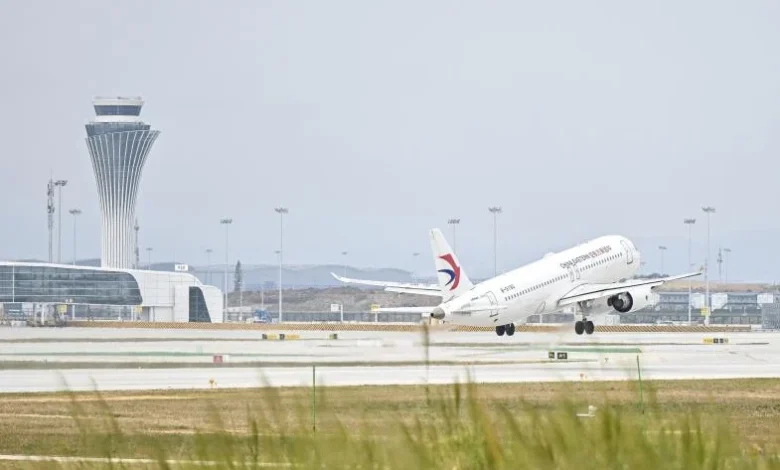Guangzhou Baiyun International Airport Terminal 3 Begins Operations

Guangzhou Baiyun International Airport has officially opened Terminal 3 (T3), marking a new stage in its expansion to a ‘five-runway, three-terminal’ operation.
The terminal commenced operations on 30 October with the departure of China Eastern Airlines flight MU6308 to Beijing Daxing International Airport, operated by a domestically produced C919 aircraft.
Guangzhou Baiyun International Airport
© Guangzhou Baiyun International Airport
The airport held a launch ceremony at Terminal 3 to mark the occasion. Passengers on the inaugural flight received commemorative gifts prepared by Baiyun Airport and China Eastern Airlines. The first arriving flight, China Eastern’s MU2219 from Lanzhou, was welcomed with a traditional water salute.
Terminal 3 has been designed around the concept of a flower, reflecting Guangzhou’s nickname as the ‘Flower City.’ The building’s structure incorporates regional features inspired by Baiyun Mountain and the Pearl River.
Meanwhile, the terminal integrates smart technologies and passenger-focused design features. It includes:
- 199 check-in counters, offering staffed, convertible, and fully self-service options
- 60 self-service check-in kiosks and 59 baggage drop units
- 87 jet bridges
- 886 flight information display screens
- 31 domestic and 9 international security lanes, with additional lanes planned
In addition, a centralised security screening and RFID tray return system has been introduced to improve screening efficiency. The terminal’s 21 dual-door identity verification gates can process checks within seconds, with a low error rate.
Connectivity is supported by the Ground Transportation Centre (GTC), which links highway, rail, and public transport systems. Adjacent parking garages (P11 and P12) provide around 2,800 spaces, 1,800 of which are available during the initial phase.
Guangzhou Baiyun International Airport
© Guangzhou Baiyun International Airport
The addition of Terminal 3 and new runways has increased Baiyun Airport’s operational capacity, supporting more domestic and international routes. Since early 2025, the airport has added or resumed over 30 international passenger services. Recent developments include IndiGo’s Kolkata–Guangzhou route, resumed on 27 October, and Air Algérie’s new Algiers–Guangzhou service launched on 28 October.
Baiyun Airport has also welcomed five new international airlines this year: Air Astana, VietJet Airlines, Uzbekistan Airways, Nepal Airlines, and Air Algérie. Scheduled passenger flight movements have reached approximately 10,700 per week in the current aviation season.
The airport authority stated that the commissioning of Terminal 3 will enhance cooperation among airports in the Guangdong–Hong Kong–Macao Greater Bay Area. The focus will be on shared growth and coordinated positioning within the regional aviation network.
Terminal 3 also represents the first large-scale hub airport in China to use Building Information Modelling (BIM) across the entire construction process. This approach covers all disciplines and project stages, providing a framework for digital management.
The terminal is also the first in China to implement a fully paperless archive system. Building information and equipment data are stored electronically to support operations and maintenance. The project’s BIM-based construction practice won the Global Construction category at the 2025 buildingSMART International openBIM Awards.





